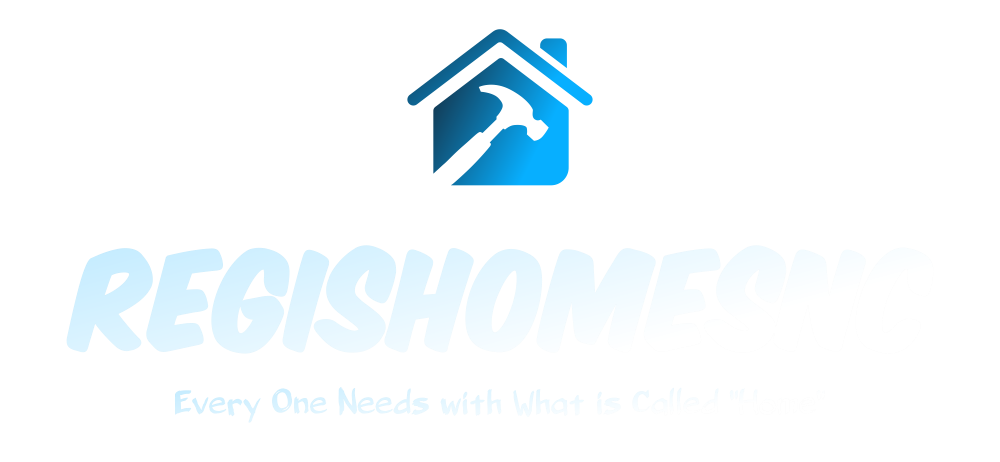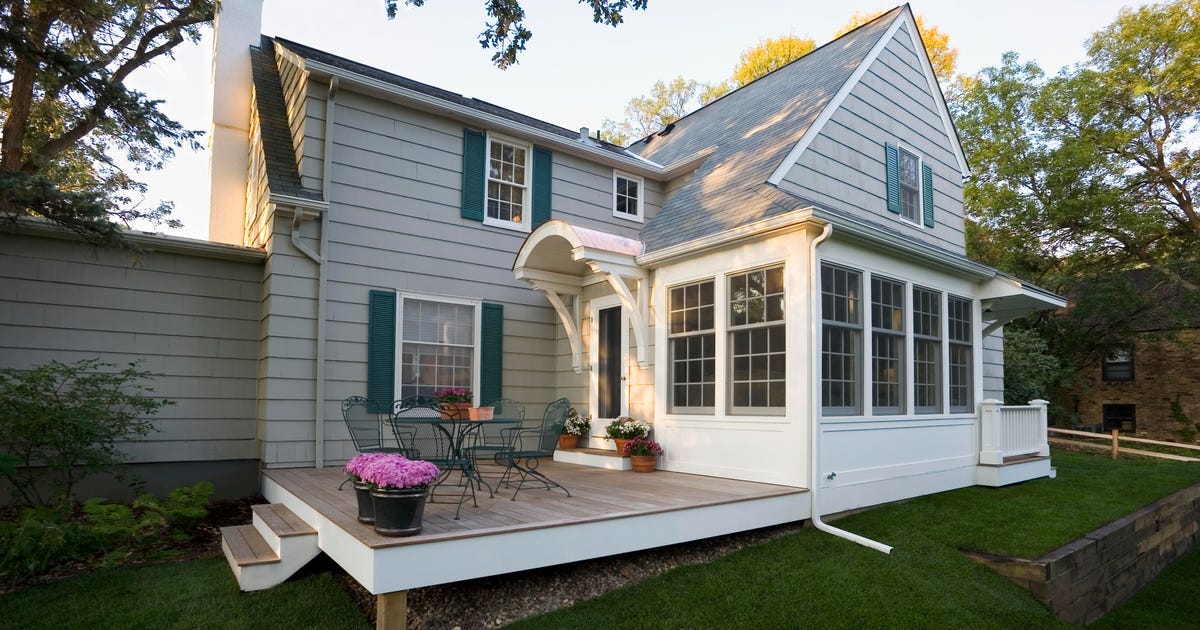
Home Equity Line of Credit (HELOC) Rates for September 2023
Table of Contents
If you’re a homeowner in need of cash, you may be considering a home equity line of credit, or HELOC. A HELOC is a type of loan that allows homeowners to borrow against the equity they’ve built in their homes to get access to a revolving line of credit.
Current average HELOC rates are lower than the rates on most personal loans or credit cards, which can save you a lot of money in interest. But borrowing with a HELOC or home equity loan comes with a risk: HELOCs are secured loans that use your home as collateral, which means you could lose your house if you can’t repay your balance. Before applying for a HELOC, make sure you map out a repayment strategy.
Here’s what you need to know about how these lines of credit work and where to find the best rates.
This week’s HELOC rates
Here are the average rates for home equity loans and home equity lines of credit, as of Sept. 27, 2023.
| Loan type | This week’s rate | Last week’s rate | Difference |
|---|---|---|---|
| $30,000 HELOC | 9.01% | 9.10% | -0.09 |
| 10-year, $30,000 home equity loan | 8.78% | 8.75% | +0.03 |
| 15-year, $30,000 home equity loan | 8.77% | 8.73% | +0.04 |
Note: These rates are averages determined by a survey conducted by Bankrate of the top 10 banks in the top 10 US markets.
Current HELOC rates and trends
If you have at least 15% to 20% equity in your property, you can use a HELOC to help cover a large expense — from a home renovation to an emergency. Just make sure you have a repayment plan in place.
HELOC rates have risen significantly over the past year and a half — they’re now above 9%. That’s because HELOCs usually have variable interest rates that are tied to a benchmark rate, such as the prime rate. The prime rate fluctuates based on market conditions, including the Federal Reserve’s key short-term interest rate, the federal funds rate. So when the Fed changes its key rate, interest rates on HELOCs move it.
Since March 2022, the Fed has carried out a series of aggressive rate hikes in an effort to bring inflation down. While the central bank decided to take a break from rate hikes at its Sept. 20 meeting, Fed Chair Jerome Powell made it clear that more increases might be necessary to bring inflation down to its target. Until the Fed begins to lower rates, home equity loan and HELOC rates will stay elevated.
Despite higher rates, HELOCs are still more attractive than refinancing if you’re looking to tap into your equity without sacrificing the rate on your primary mortgage, according to Doug McKnight, president of commercial real estate investment firm RREAF Holdings.
Top HELOC rates for September 2023
| Lender | APR | Introductory APR | Loan amount | HELOC terms | Max LTV |
|---|---|---|---|---|---|
| US Bank | 8.8% to 12.55% | N/A | $15,000 – $750,000, up to $1 million for properties in California | 10-year draw period, unspecified repayment period | 80% |
| TD Bank | 8.34% (0.25% TD checking account discount included) | N/A | From $25,000 | 10-year draw period, 20-year repayment period | 89.99% |
| Connexus Credit Union | From 8.24% | N/A | $5,000 – $200,000 | 15-year draw period, 15-year repayment period | Not specified |
| Spring EQ | Fill out application for personalized rates | N/A | $50,000 – $500,000 | 10-year draw period, 20-year repayment period | 90% for home equity loans, not specified for HELOCs |
| KeyBank | From 10.5% (0.25% KeyBank client discount included) | N/A | From $10,000 | 15-year draw period, 15-year repayment period | 90% |
| Third Federal | 7.49% | N/A | $10,000 – $200,000 | 10-year draw period, 30-year repayment period | 80% |
| PNC | Fill out application for personalized rates | N/A | $10,000 – $1 million | 10-year draw period, 30-year repayment period | 89.90% |
| Frost | 9% to 18% (0.25% autopay discount included) | N/A | From $8,000 | 10-year draw period, 20-year repayment period | 80% |
| Regions | 8.875% to 15.75% (Regions client discount included) | N/A | $10,000 – $500,000 | 10-year draw period, 20-year repayment period | 95% |
| Citizens | From 8.5% (0.25% autopay discount included) | N/A | From $5,000 | 10-year draw period, 15-year repayment period | 80% |
| BMO Harris | From 8.24% (0.50% autopay discount included) | 6.99% for first six months | From $10,000 | 10-year draw period, 20-year repayment period | 70% |
| Flagstar | 8.74% to 21% (0.25% autopay discount included) | N/A | $10,000 – $1 million | 10-year draw period, 20-year repayment period | 89.99% |
| Truist | 10.05% to 16% | 7.49% for first 12 months | From $10,000 | 10-year draw period, 20-year repayment period | 85% |
| Figure | Fill out application for personalized rates | N/A | $15,000 – $400,000 | Five, 10, 15 or 30 years | 95% |
| PenFed Credit Union | From 8.625% | N/A | $25,000 – $1 million | 10-year draw period, 20-year repayment period | 90% |
Note: Annual percentage rates as of Sept. 1, 2023. Your APR will depend on factors such as your credit score, income, loan term and whether you enroll in autopay or other lender specific requirements.
Best HELOC lenders of September 2023
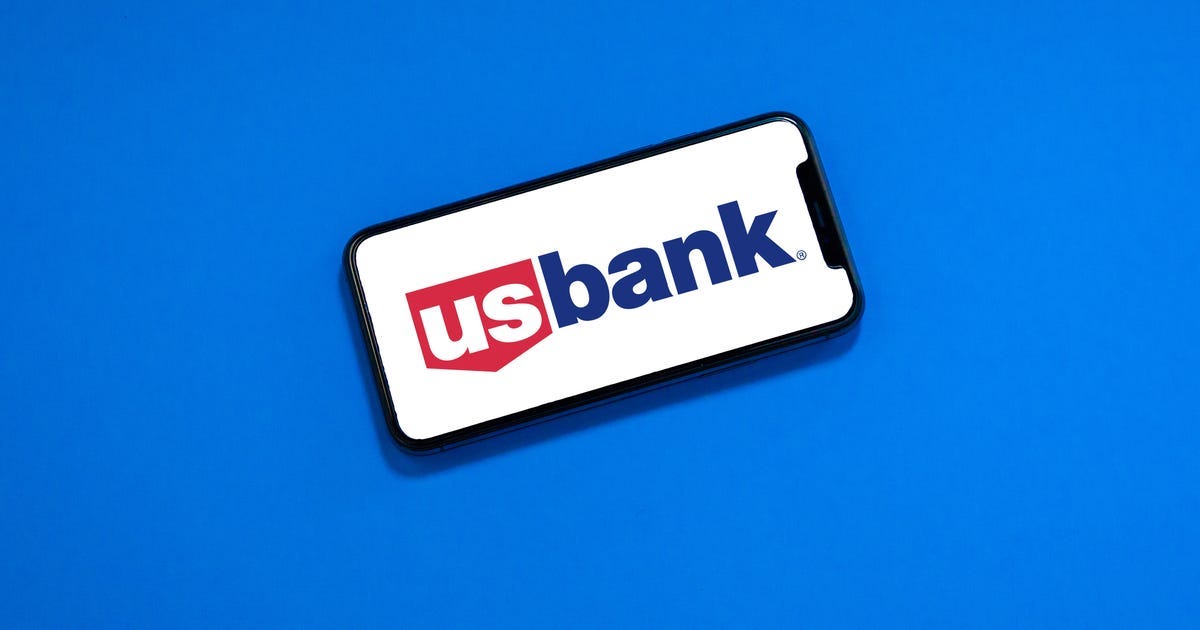
U.S. Bank
Good for nationwide availability
U.S. Bank offers both home equity loans and HELOCs in 47 states, with the option of interest-only HELOCs available to qualified borrowers. You also have the option to lock all or part of your outstanding HELOC balance into a fixed-rate option during your draw period.
You can apply for a home equity loan or HELOC through an online application, by phone or by visiting a U.S. Bank branch in person.
- APR: 8.8% to 12.55%
- Introductory APR: N/A
- Max LTV ratio: 80%
- Loan amount: $15,000 to $750,000 (up to $1 million for properties in California)
- Terms: 10-year draw period, unspecified repayment period
- Fees: There are no closing costs on HELOCs from U.S. Bank, but you’ll be charged an early closure fee of 1% of the line amount ($500 max) if you close your HELOC within 30 months of opening. HELOC borrowers may be charged an annual fee of up to $90, which can be waived with a U.S. Bank Platinum Checking Account.
- Perks: You have the option to lock all or part of your outstanding HELOC balance into a fixed-rate option during your draw period.
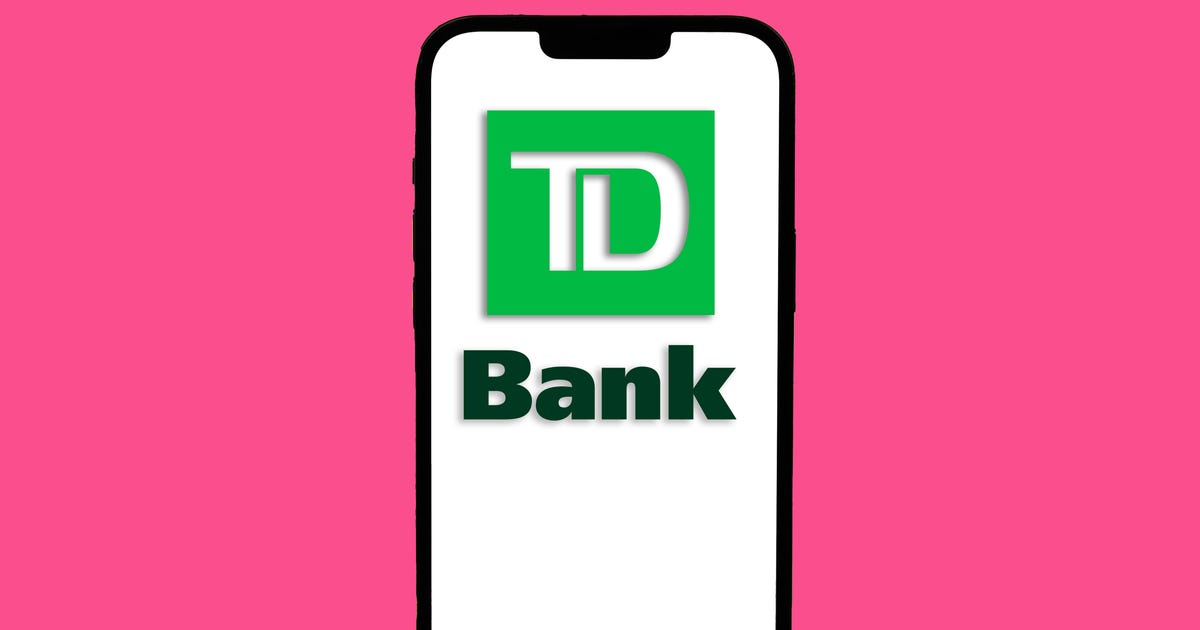
TD Bank
Good price transparency
TD Bank offers home equity loans and HELOCs in 15 states, with the option for interest-only and rate-lock HELOCs.
You can apply for a TD Bank home equity loan or HELOC online, by phone or by visiting a branch in person. The online application includes a calculator that will tell you the maximum amount you can borrow based on the information you input. You can also see a full breakdown of rates, fees and monthly payments by entering some basic information online. No credit check is required for this service.
- APR: 8.34% (0.25% TD checking account discount included)
- Introductory APR: N/A
- Max LTV ratio: 89.99%
- Loan amount: From $25,000
- Terms: 10-year draw period, 20-year repayment period
- Fees: Closing costs for HELOCs exist only on loan amounts greater than $500,000, but you will have to pay a $99 origination fee at closing regardless of your loan amount. There is also an annual fee of $50 on HELOCs for lines over $50,000. You will be charged an early termination fee — 2% of the outstanding balance — if you close your HELOC within 24 months of opening.
- Perks: You will receive a 0.25% rate discount if you set up a TD personal checking account.
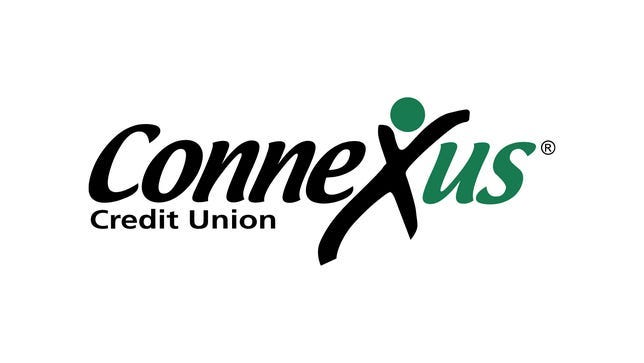
Connexus Credit Union
Flexible credit union eligibility
Connexus Credit Union offers home equity loans and HELOCs in 46 states (excluding Alaska, Hawaii, Maryland and Texas). This credit union also offers an interest-only HELOC.
Since Connexus is a credit union, its products are available only to its members. But membership eligibility is open to most people: you (or a family member) just need to be a member of a one of Connexus’ partner groups, reside in one of the communities or counties on Connexus’ list or become a member of the Connexus Association with a $5 donation to its nonprofit.
To apply for a home equity loan or HELOC with Connexus, you can fill out a three-step application online. You won’t be able to see a personalized rate without a credit check.
- APR: From 8.24%
- Introductory APR: N/A
- Max LTV ratio: Not specified
- Loan amount: $5,000 to $200,000
- Terms: 15-year draw period, 15-year repayment period
- Fees: You won’t have to pay an annual fee for a home equity loan or HELOC with Connexus, but closing costs can range from $175 to $2,000 depending on the loan terms and property location.
- Additional requirements: Must be a member of the credit union.
- Perks: Introductory rate for the first six months of your loan term.

Spring EQ
Good online application user experience
Spring EQ operates in 38 states and offers home equity loans, HELOCs and interest-only HELOCs. While Spring EQ doesn’t display rates without an application, they do advertise a maximum LTV ratio of 90% for home equity loans. It doesn’t clarify whether the same maximum LTV ratio is applicable to HELOCs.
The loan application process is transparent and easy to understand. Customers can see an extensive breakdown of their loan options without needing to undergo a credit check or provide their Social Security number.
- APR: Fill out application for personalized rates
- Introductory APR: N/A
- Max LTV ratio: 90% for home equity loans, not specified for HELOCs
- Loan amount: $50,000 to $500,000
- Terms: 10-year draw period, 20-year repayment period
- Fees: Loans may be subject to an origination fee of $995 and an annual fee of $99 in some states.
- Additional requirements: Borrowers must have a minimum credit score of 680 and debt-to-income ratio of 45% or less.
- Perks: Spring EQ offers a high maximum loan-to-value ratio.

KeyBank
Wide range of product offerings
KeyBank offers home equity loans to customers in 15 states and HELOCs to customers in 44 states. Aside from a standard HELOC, KeyBank also offers interest-only and rate-lock options.
The KeyBank application allows you to apply for multiple products at one time. If you’re not sure whether KeyBank loans are available in your area, the application will tell you once you input your ZIP code. If you’re an existing KeyBank customer, you’ll have the option to skim through the application and import your personal information from your account.
- APR: From 10.5% (0.25% KeyBank client discount included)
- Introductory APR: N/A
- Max LTV ratio: 90%
- Loan amount: From $10,000
- Terms: 15-year draw period, 15-year repayment period
- Fees: KeyBank HELOCs come with an annual fee of $50, but no closing costs unless your closing is performed by a closing agent. In that case, a closing fee could be up to $400.
- Perks: 0.25% rate discount for clients who have eligible checking and savings accounts with KeyBank.

Third Federal Savings & Loan
Good for long repayment period
Third Federal Savings & Loan offers HELOCs in 26 states and home equity loans in only eight states. If you find a different lender that offers a lower interest rate, Third Federal says it will match the rate or pay you $1,000 if it can’t.
You can apply for a home equity loan or HELOC on the Third Federal website. Both applications are included on the same page along with multiple rate and term options, allowing you to assess what will be best for you.
- APR: 7.49%
- Introductory APR: N/A
- Max LTV ratio: 80%
- Loan amount: $10,000 – $200,000
- Terms: 10-year draw period, 30-year repayment period
- Fees: Third Federal doesn’t require you to pay an origination fee or closing costs, and the annual $65 fee is waived your first year.
- Perks: If you find a different lender that offers a lower interest rate, Third Federal says it will match the rate or pay you $1,000 if it can’t.
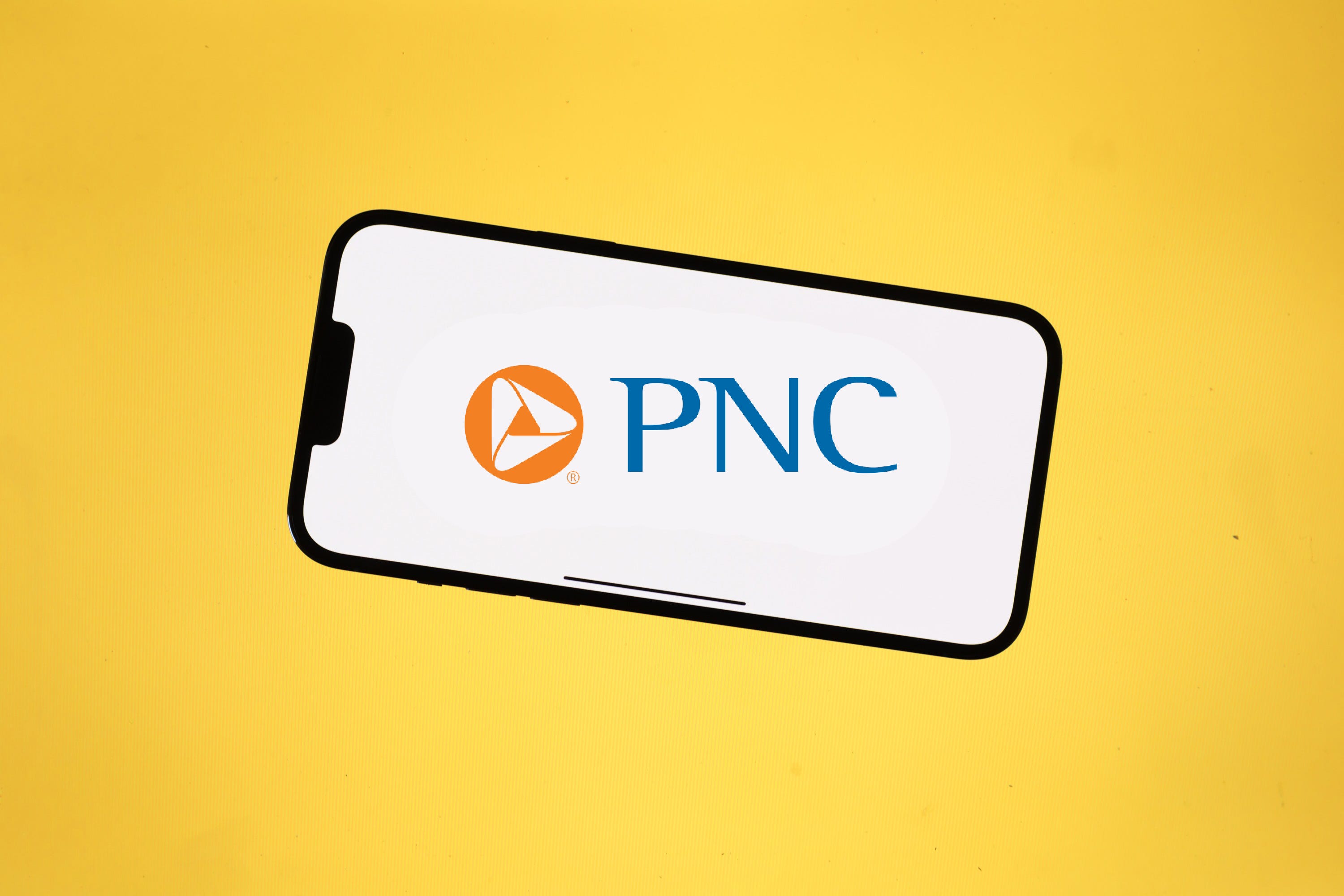
PNC Bank
Good option for fixed-rate HELOCs
PNC Bank operates in 44 states. While PNC doesn’t offer home equity loans, it does offer both variable-rate and fixed-rate HELOCs. PNC HELOCs are also good for their long repayment periods — 30 years. A long repayment period generally means lower monthly payments (but more interest paid in the long run). PNC also gives you the option to lock in a specific rate on all or a portion of your HELOC balance, but you must pay a $100 fee every time you do so.
PNC doesn’t show its rates online. You must fill out an application to see personalized rates, but the site is user-friendly. Customers can estimate their home equity with an easy-to-use calculator.
- APR: Fill out application for personalized rates
- Introductory APR: N/A
- Max LTV ratio: 89.9% for first liens, 85% for second liens
- Loan amount: $10,000 – $1 million
- Terms: 10-year draw period, 30-year repayment period
- Fees: $50 annual fee (except in Texas). $100 fee every time you convert your HELOC into a fixed-rate option.
- Perks: Borrowers can receive a 0.25% discount when they set up and maintain automatic payments from a qualifying PNC checking account.

Frost Bank
Good option for Texas borrowers
Headquartered in San Antonio, Frost Bank’s products are available only to Texas residents. It offers home equity loans, HELOCs and interest-only HELOCs.
You can apply for a home equity loan or HELOC on the Frost Bank website, but first you’ll need to create an account. According to the bank, the application will only take you about 15 minutes. If you’re not located in Texas, you won’t be able to apply.
- APR: 9% to 18% (0.25% autopay discount included)
- Introductory APR: N/A
- Max LTV ratio: 80%
- Loan amount: Starting from $8,000
- Terms: 10-year draw period, 20-year repayment period
- Fees: None
- Additional requirements: Borrower must live in Texas.
- Perks: If you set up automatic payments from a Frost Bank checking or savings account, you’ll be eligible for a 0.25% rate discount.

Regions Bank
Good for autopay discounts
Regions Bank serves customers across the South, Midwest and Texas. Regions offers home equity loans and HELOCs in 15 states. HELOC offerings include a rate-lock option for customers who want it.
You can apply for a Regions home equity loan or HELOC online, in-person or over the phone. You have to create an account with Regions to apply, though you can use the bank’s rate calculator to estimate your rate and payment amount beforehand.
- APR: 8.875% to 15.75% (Regions client discount included)
- Introductory APR: N/A
- Max LTV ratio: 95%
- Loan amount: $10,000 – $500,000
- Terms: 10-year draw period, 20-year repayment period
- Fees: Closing costs between $150 and $2,000. Regions will pay these costs if the HELOC amount is $250,000 or less.
- Perks: For home equity loans and HELOCs, Regions offers rate discounts between 0.25% and 0.5% to those who opt into automatic payments from a Regions checking account.

Citizens
Good option for low loan amounts
Citizens offers standard and interest-only HELOCs to borrowers in 19 states. The bank doesn’t offer home equity loans at all. Citizens’ minimum loan amount is $5,000, which may be a draw for customers who aren’t looking to borrow a large amount of money.
You can apply for a HELOC on the Citizens website, but you also have the option to speak to a loan specialist on the phone. You need to sign up with a phone number and email to access the application.
- APR: From 8.50% (0.25% autopay discount included)
- Introductory APR: Not specified
- Max LTV ratio: 80%
- Loan amount: From $5,000
- Terms: 10-year draw period, 15-year repayment period
- Fees: Citizens won’t require any application fees or closing costs, but you will have to pay a $50 annual fee (waived the first year of your draw period).
- Perks: 0.25% rate discount for borrowers who enroll in autopay from a Citizens checking account. In states where Citizens doesn’t offer checking accounts, consumers can get the same discount with automatic payments set up from any checking account.
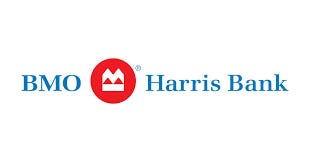
BMO Harris Bank
Good introductory APR
BMO Harris (a subsidiary of the Canadian financial services company Bank of Montreal) has products and services available in 48 states (all but New York and Texas). BMO Harris offers home equity loans and three variations of a HELOC.
You can apply for a home equity loan or HELOC online or in-person. You can get personalized rates without a hard credit check, but you’ll have to speak with a representative on the phone.
- APR: From 8.24% (0.5% autopay discount included)
- Introductory APR: 6.99% for first six months
- Max LTV ratio: Not specified
- Loan amount: From $10,000
- Terms: 10-year draw period, 20-year repayment period
- Fees: There is no application fee for home equity loans or HELOCs with BMO Harris. In addition, BMO Harris will pay closing costs for loans secured by an owner-occupied one-to-four-family residence. Borrowers will have to pay a $75 annual fee.
- Additional requirements: The minimum credit score required is 650 to 680.
- Perks: If you set up autopay from a BMO Harris checking account, you’ll be eligible to receive a 0.5% rate discount.

Flagstar Bank
Good customer support
Flagstar Bank offers home equity loans and HELOCs in 49 states (all but Texas) — but check your specific ZIP code for availability.
Flagstar doesn’t have a full online application, only a form where you can submit your information to be contacted by a representative. You can get a custom rate based on a soft credit check and some additional information. Flagstar’s tedious application process may be frustrating, but the lender does offer several customer support options, including 24-hour loan support over the phone.
- APR: 8.74% to 21% (0.25% autopay discount included)
- Introductory APR: N/A
- Max LTV ratio: 89.99% or lower
- Loan amount: $10,000 – $1 million
- Terms: 10-year draw period, 20-year repayment period
- Fees: HELOCs with Flagstar require an additional $75 fee, but it is waived the first year. To avoid closing fees, you’ll have to keep your HELOC open for at least 36 months.
- Perks: There is a 0.25% rate discount for borrowers who have monthly automatic payments set up from a Flagstar bank deposit account.
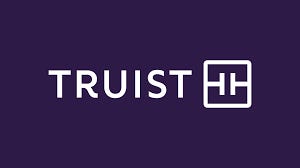
Truist
A good fast funding option
Truist offers standard, interest-only and rate-lock HELOCs to borrowers in 15, primarily Southeastern, states. Truist doesn’t offer home equity loans at all.
You can apply for a HELOC on Truist’s website. You won’t be required to sign up for an account, but if you already have one with Truist, you’ll be able to auto-fill your application. Truist advertises that the turnaround time from application to closing averages 30 to 35 days, that’s one of the fastest times among its bank peers (not including newer, nontraditional startup companies like Figure).
- APR: 10.05% to 16%
- Introductory APR: 7.49% for first 12 months
- Max LTV ratio: 85%
- Loan amount: From $10,000
- Terms: 10-year draw period, 20-year repayment period
- Fees: When closing, the borrower will have the option to pay closing costs themselves or advance them (have Truist pay them). If you choose the latter, you won’t have to reimburse Truist for the closing costs if you keep your account open for at least three years. There is a $50 annual fee in some states.
- Perks: Truist says the average closing time is 30 to 35 days.

Figure
Lump-sum HELOC offering
Figure uses a unique combination of technology and banking to provide customers in 41 states with HELOCs. Though officially called a HELOC, Figure’s HELOC has characteristics of both a traditional HELOC and a home equity loan. Borrowers withdraw the full line amount (minus the origination fee) at the time of origination. Once you repay the initial balance at a fixed rate, you will be able to make additional draws over a specified period.
Figure says it will deliver funds in as little as five days. The application is entirely online and takes about five minutes to complete, according to Figure.
- APR: Fill out application for personalized rates
- Introductory APR: N/A
- Max LTV ratio: 95%
- Loan amount: $15,000 – $400,000
- Terms: Five, 10, 15, or 30 years
- Fees: A HELOC with Figure has no closing costs, but the borrower will be responsible for an origination fee of up to 4.99% of the initial draw, depending on the state and the borrower’s credit profile. You may also have to pay a recording fee if your county requires it.
- Additional requirements: Minimum credit score of 620 in most states (720 in Oklahoma).
- Perks: Borrowers may receive a rate discount of up to 0.75%; 0.5% for opting into a credit union membership and 0.25% for enrolling in autopay.
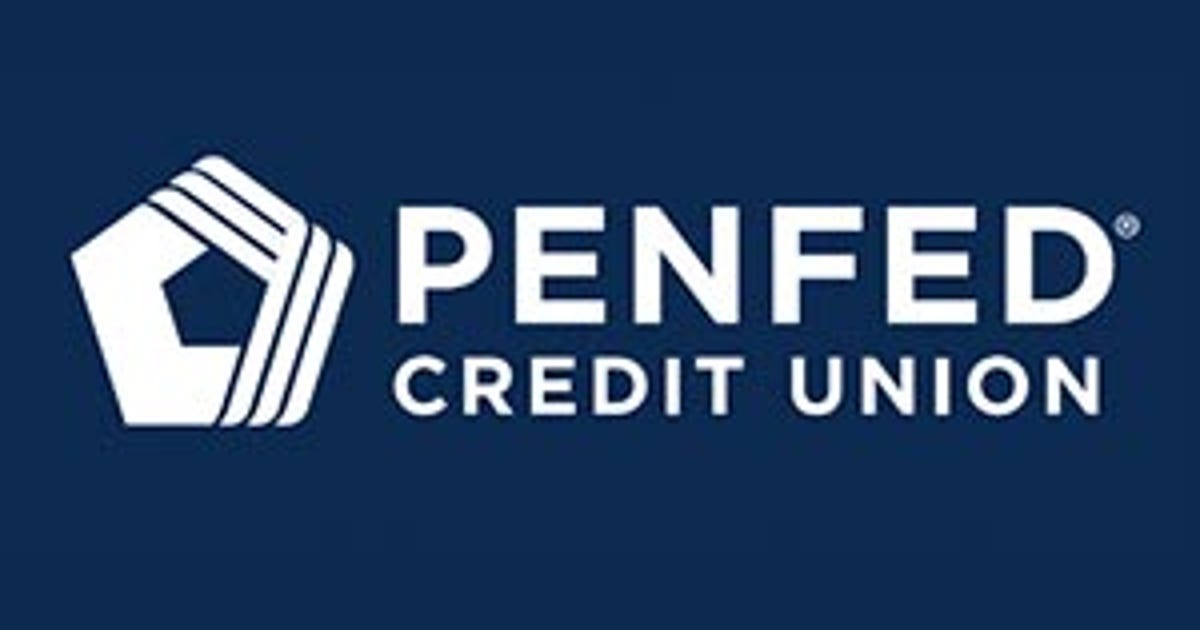
PenFed Credit Union
Good option for borrowers outside the continental US
The Pentagon Federal Credit Union (widely known as PenFed) offers HELOCs in all 50 states, as well as Guam, Puerto Rico and Okinawa, Japan. PenFed is a credit union so its products are available only to members, but you can easily become a member by opening a PenFed savings account and funding it with at least $5.
With PenFed, you can choose between a standard, interest-only or rate-lock HELOC. PenFed doesn’t offer home equity loans. To apply for a HELOC with PenFed, you’ll have to request a callback over the phone. This feature may be a major drawback for customers who prefer online services and applications.
- APR: Starting from 8.625%
- Introductory APR: N/A
- Max LTV ratio: 90%
- Loan amount: $25,000 – $1 million
- Terms: 10-year draw period, 20-year repayment period
- Fees: Annual fee of $99 unless you have $99 in interest during the preceding year. PenFed will pay most closing costs, but for credit lines greater than $500,000, the borrower will likely be responsible for closing costs.
- Additional requirements: Minimum credit score of 660 and maximum debt-to-income ratio of 50%.
- Perks: PenFed serves borrowers in all 50 states, as well as Guam, Puerto Rico and Okinawa, Japan. The credit union has flexible membership requirements.
What is a HELOC?
A home equity line of credit, or HELOC, is a loan that lets you borrow against the equity you’ve built in your home. Unlike a home equity loan, a HELOC offers you a line of credit rather than a lump sum of money, similar to a credit card. You can access your line of credit during the draw period, usually 10 years. During that time, you’re generally required to pay back only the interest on the money you’ve withdrawn, which means you can borrow a large amount of money for an extended period of time while making only minimum monthly payments.
The most common uses of a HELOC are for home improvements, such as adding solar panels, debt consolidation and other large expenses. However, there are no restrictions on how you can use the money from a HELOC.
HELOCs generally have lower rates than most credit cards, personal loans, home equity loans and mortgage refinances. But HELOCs are also risky because they’re secured loans, which require collateral to obtain financing: Your home serves as the collateral, so if you’re unable to pay back the money you’ve withdrawn, you could lose your house. In addition, HELOCs usually have variable interest rates, meaning your rate can go up or down with the market, so you won’t always have a predictable monthly payment.
Who qualifies for a HELOC?
Although it varies by lender, to qualify for a HELOC you’re typically required to meet the following criteria:
- At least 15% to 20% equity built up in your home: Home equity is the amount of home you own, based on how much you’ve paid toward your mortgage. Subtract what you owe on your mortgage and other loans from the current appraised value of your house to figure out your home equity number.
- Adequate, verifiable income and stable employment: Proof of income is a standard requirement to qualify for a HELOC. Check your lender’s website to see what forms and paperwork you will need to submit along with your application.
- A minimum credit score of 620: Lenders use your credit score to determine the likelihood that you’ll repay the loan on time. Having a strong credit score — at least 700 — will help you qualify for a lower interest rate and more amenable loan terms.
- A debt-to-income ratio of 43% or less: Divide your total monthly debts by your gross monthly income to get your DTI. Like your credit score, your DTI helps lenders determine your capacity to make consistent payments toward your loan. Some lenders prefer a DTI of 36% or less.
How to apply for a HELOC
Before applying for a HELOC, make sure that you’ll be able to qualify for the loan amount you need. Also, confirm it’s the right type of loan for your situation because there are other ways to access your home equity, such as home equity loans or a cash-out refinance. Also make sure you meet the basic requirements of most lenders by having at least 15% to 20% equity in your home, a good credit score and a low combined loan-to-value ratio, or CLTV, which is the ratio of all of your outstanding mortgage balances compared to the market value of your property.
How to determine your LTV ratio
To calculate how much equity you have in your home, look up your outstanding mortgage balance and subtract it from your home’s appraised value.
For example, if your home is currently worth $500,000 and you have $400,000 left to pay on your mortgage, then you have $100,000 of equity in your home.
The next step is to determine your loan-to-value ratio, or LTV ratio, which is your outstanding mortgage balance divided by your home’s current value. (Your combined loan-to-value ratio, or CLTV ratio, is simply the ratio of all outstanding loans secured against your property divided by your home’s current value. Most lenders want to see a CLTV of 85% or lower.) So for a $500,000 home that you owe $400,000 on, the calculation would be:
$400,000 / $500,000 = 0.80
In this example, you would have an 80% LTV ratio. Most lenders will let you borrow in the neighborhood of 75% to 90% of your available home equity, but having a high LTV tells a lender you may be a risky borrower. To determine if you’ll hit that threshold you can use the below formula, which assumes a lender will allow you to borrow up to 85% of your home equity:
$500,000 [current appraised value] X 0.85 [maximum equity percentage you can borrow] – $400,000 [outstanding mortgage balance] = $25,000 [what the lender will let you borrow]
Reach out to lenders
It’s important to interview multiple lenders to find a loan with a favorable interest rate and terms. The more banks and lenders you contact, the better your chances of finding more favorable rates and fees overall. A good place to start can sometimes be the lender or bank that issued your first mortgage, since they’ve already approved you for one loan and you have an existing relationship with that lender. Also compare rates from online lenders.
Send in your application
Once you’ve chosen a lender, it’s time to gather all of your financial documentation to verify you can comfortably pay back the HELOC. You’ll need things like proof of income and employment, and in some cases, you may need to pay for a new home appraisal to verify the current market value of your property, especially since home values have skyrocketed over the past two years. After all of your financial paperwork is submitted, the final step is to close on the loan, which can take anywhere from 30 to 60 days depending on the lender.
Tips for comparing multiple HELOC offers
The offers you receive will vary from lender to lender, but the more you know about the specific ins and outs of those offers, the better your chances of saving money and interest on your home loan. There are a few major factors to consider when deciding which HELOC offer to go with.
Introductory rate period
Since HELOCs have variable interest rates that are tied to the prime rate, your interest rate will go up and down over time. Be aware of what the prime rate is and know that you’ll be paying a markup on that interest rate. In the beginning, however, most HELOCs come with a lower introductory rate period, but the length of those initial rates will differ by lender, and you want to find the longest one possible. The longer you have a lower interest rate, the more money you’ll save over time.
Rate cap
Ask what your maximum HELOC interest rate cap will be. HELOCs have lifetime interest rate caps that they can’t legally exceed — so even if the prime rate rises and surpasses your rate cap, your HELOC rate won’t increase any further. If you have an existing HELOC, you can attempt to negotiate a lower rate with your lender. “Ask your current HELOC lender if they will fix the interest rate on your outstanding balance,” said Greg McBride, chief financial analyst at Bankrate, CNET’s sister site. “Some lenders offer this, many do not. But it is worth asking the question.”
Minimum withdrawals
Some lenders require minimum withdrawals regardless of your total line of credit, which means you could get stuck making interest payments on funds you don’t actually need if that amount is less than the mandatory minimum withdrawal amount set by your lender. It’s also important to make sure you know when your draw period ends so that you can afford the larger principal-plus-interest payments you must start making once you enter your repayment period.
Methodology
We evaluated a range of lenders based on factors such as interest rates, APRs and fees, how long the draw and repayment periods are, and what types and variety of loans are offered. We also took into account factors that impact the user experience such as how easy it is to apply for a loan online and whether physical lender locations exist.
You can use CNET’s mortgage calculator to help you determine how much house you can afford. The CNET mortgage calculator factors in variables like the size of your down payment, home price and interest rate to help you figure out how large of a mortgage you may be able to afford. Using the CNET mortgage calculator can help you understand how much of a difference even a slight increase in rates can make in how much interest you’ll pay over the lifetime of your loan.
